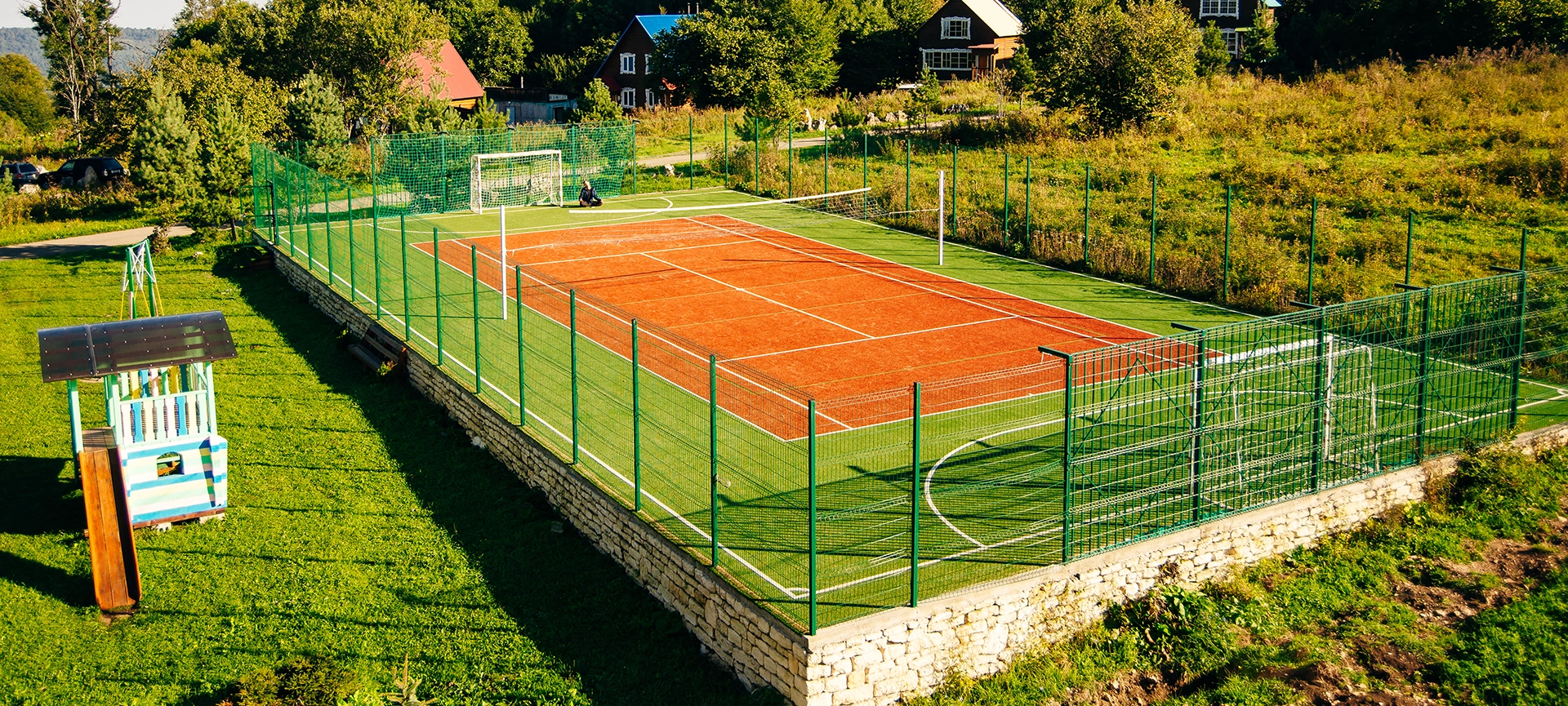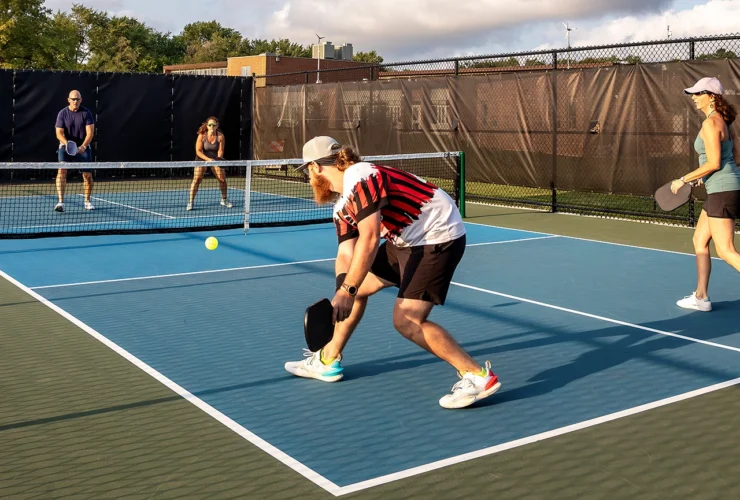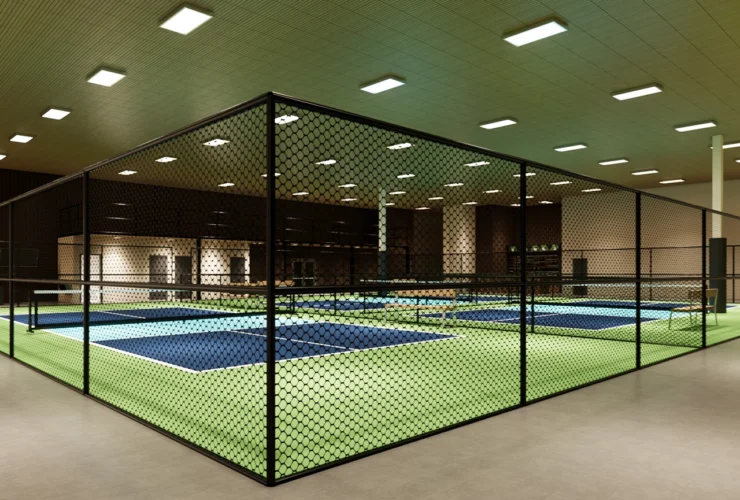Tennis Court Fencing: Materials, Height, and Maintenance
Tennis court fencing is essential to any tennis facility, providing safety and security while also enhancing the overall playing experience. Selecting the right materials, adhering to height regulations, and implementing proper maintenance practices are crucial for ensuring the longevity and functionality of tennis court fences.
As the leading tennis court fencing and surfacing in Toronto provider, we’ve got tons of experience to help you decide on the right fence. Here, we’ll delve into various aspects of tennis court fencing, including the materials used, height regulations, and essential maintenance practices.
By understanding these factors, tennis court owners and operators can make informed decisions and ensure their fencing remains durable and visually appealing.
Best Materials for Tennis Court Fencing
A wide range of materials is available for tennis court fencing, each offering its own unique advantages. Here are some popular options:
- Chain Link Fencing: Chain link fencing is a cost-effective choice for tennis courts. It is known for its durability, low maintenance requirements, and excellent visibility. Tennis surface contractors recommend chain link fencing for its weave design which allows airflow, reducing wind resistance during play.
- Vinyl Coated Chain Link Fencing: This type of fencing offers the benefits of traditional chain link fencing with the added advantage of a vinyl coating. The coating enhances aesthetics, provides better resistance to weather conditions, and reduces the risk of rust and corrosion.
- Welded Wire Fencing: Welded wire fencing consists of horizontal and vertical wires welded together, forming a grid pattern. It offers strength, durability, and an unobstructed view. This option is particularly suitable for high-traffic areas and facilities requiring extra security.
- Mesh Panel Fencing: Mesh panel fencing provides a sleek and modern look to tennis courts. It offers excellent visibility and security, and is available in various designs and colours. Mesh panels are usually made of galvanized steel or aluminum, providing durability and resistance to weather conditions.]
Related Article: The Importance of Tennis Court Drainage Systems: Ensuring Proper Water Management
Height Regulations for Tennis Court Fencing
To ensure player safety and prevent unauthorized access, tennis court fences must comply with height regulations.
While specific regulations may vary depending on local governing bodies or tennis associations, the minimum height for tennis court fencing is typically around 10 feet (3 meters).
However, it’s crucial to consult local regulations and seek professional guidance to ensure compliance with the specific requirements in your area.
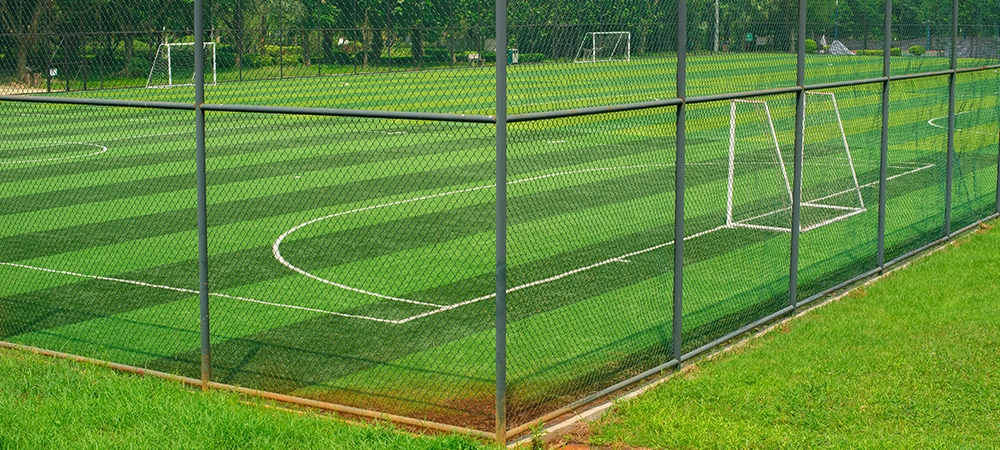
Maintaining Tennis Court Fences
Proper maintenance is essential for maximizing the lifespan and functionality of tennis court fencing. Here are some essential maintenance practices:
- Regular Inspections: Conduct routine inspections to identify any signs of damage, such as loose wires, bent posts, or rust. Promptly repair or replace damaged components to prevent further deterioration.
- Cleaning: Regularly remove debris, dirt, and vegetation from the fencing. Use a mild detergent and a soft brush or pressure washer to clean the fence, ensuring it remains free from grime and stains. Avoid using abrasive cleaners or tools that could damage the fence surface.
- Rust Prevention: If your fence is made of metal, applying a rust-resistant coating or paint is crucial to protect it from corrosion. Regularly inspect the fence for signs of rust and address it promptly by removing the rust and applying a protective coating.
- Vegetation Control: Trim any nearby vegetation that may come into contact with the fence. Overgrown plants can exert pressure on the fence, leading to damage or reduced stability.
Choosing the Right Tennis Court Fencing
When selecting tennis court fencing, consider the following factors:
- Purpose: Determine the primary purpose of the fence, whether it is for security, aesthetics, noise reduction, or a combination of these factors. This will help guide you in choosing the appropriate fencing material.
- Budget: Assess your budget constraints and balance them with the desired durability and aesthetics of the fence. It’s important to strike a balance between affordability and quality.
- Local Regulations: Familiarize yourself with the height regulations and other local requirements to ensure compliance. Consult with local authorities or tennis associations for specific guidelines in your area.
Related Article: Clay Tennis Courts vs. Other Court Types: Which is Best for You?
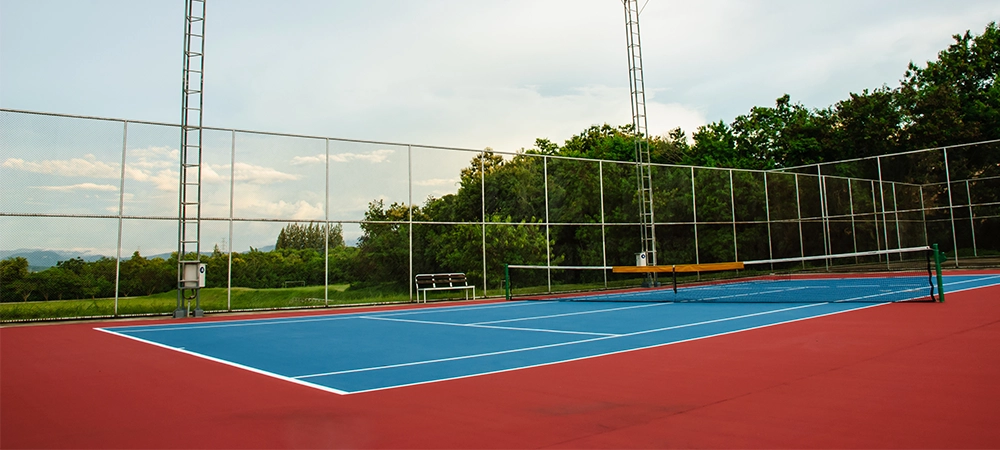
Conclusion
Tennis court fencing plays a crucial role in creating a safe and enjoyable environment for players. By selecting the right materials, adhering to height regulations, and implementing proper maintenance practices, you can ensure the longevity and functionality of your tennis court fence.
Whether you choose chain link, vinyl-coated, welded wire, or mesh panel fencing, the right decision aligns with your needs and budget, as described above. And our tennis surface contractors at Crowall Surface Contractors can answer any questions you have about tennis court fencing.
Call us today at 1-416-951-4626. We’ll help you make a decision that favours both the aesthetics and overall experience of the game.

